How to Travel to Vietnam From The US
Vietnam is no doubt one of the most exciting destinations in Southeast Asia. Home to stunning nature, a rich history, warm hospitality, and incredible food, it’s no surprise that more and more people are putting it on their travel list. You’ll never run out things to explore: major cultural hubs like Hanoi or Ho Chi Minh City, peaceful mountainous areas like Ha Giang, or relaxing beach destinations such as Nha Trang or Phu Quoc.
If you’ve been wondering how to travel to Vietnam from the US, this guide covers everything you need to know: flight options, visa requirements, cultural tips, what to eat, where to stay, and much more. If you're planning your first trip or just want to make your next visit smoother, we’ve put together the most useful information to help you get started.
1. What to know before you travel to Vietnam from the US?
1.1. How far is Vietnam from the US
Vietnam is on the other side of the world from the United States, so the distance and travel time are significant. On average, the distance from the US to Vietnam is about 8,000 to 9,500 miles, depending on your departure and arrival cities.
Flight time usually ranges from 16 to 30 hours, including layovers. From cities like Los Angeles or San Francisco, you might get shorter routes (around 20–24 hours total). From New York, Boston, or Chicago, it usually takes longer.
1.2. Time difference
Vietnam is in the Indochina Time Zone (ICT), which is UTC+7.
Here’s an example:
-
When it's 12:00 PM (noon) in New York, it’s 11:00 PM in Vietnam.
-
When it’s 12:00 PM in Los Angeles, it’s 2:00 AM the next day in Vietnam.
You’ll likely feel some jet lag, especially if you're coming from the East Coast. Give yourself a day or two to adjust.
1.3. The climate
Vietnam has a tropical monsoon climate. That means it’s hot and humid most of the year, but the weather changes from north to south and between seasons.
-
North Vietnam (Hanoi, Sapa) has four seasons. Winter (Nov–Feb) can be chilly, especially in the mountains—down to 50°F (10°C). Summer (May–Aug) is hot, up to 95°F (35°C).
-
Central Vietnam (Hoi An, Hue) is hot year-round. Rainy season is from September to December.
-
South Vietnam (Ho Chi Minh City) stays hot and humid all year, expect temps around 85–95°F (29–35°C).
Best time to visit? Between November and April, when it’s generally dry and more comfortable throughout the country.
1.4. The currency
Vietnam uses the Vietnamese đồng (VND). The exchange rate can vary, but as of now, $1 USD is around 24,000 VND.
You’ll quickly get used to the big numbers. For example:
-
A bowl of pho costs around 30,000–60,000 VND ($1.25–$2.50).
-
A decent hotel room can start from 200,000 to 1,200,000 VND ($7.6 –$50), depending on the location and quality.
Pro tip: Bring some cash in USD, and exchange it locally for better rates. ATMs are widely available and accept most US debit and credit cards.
1.5. Safety in Vietnam
Vietnam is generally a very safe country for tourists. Crime levels are low, and locals are friendly and helpful. That said, keep an eye on your belongings in crowded places, especially in big cities like Hanoi and Ho Chi Minh City. Petty theft (like bag snatching or pickpocketing) can happen.
As for health, Vietnam does not require vaccines for US travelers. However, it’s smart to be up to date on standard shots (like Hepatitis A/B and Tetanus). Drink bottled water, avoid ice from street stalls, and use hand sanitizer. The healthcare system in big cities is modern, and travel insurance is always a good idea.
2. What are the entry requirements for Vietnam from the US?
2.1. Vietnam travel requirements
To enter Vietnam, US citizens must have a valid passport and a visa. Your passport must be valid for at least 6 months from your date of arrival, and it must have at least one blank page (not including the endorsement page).
Do US citizens need a visa to Vietnam?
Yes. However, you have a few different ways to apply (online, at the embassy, or on arrival), and most of them are easy and quick.
Visa exemption:
If you're a Vietnamese national living abroad, or you're married to a Vietnamese citizen, you can apply for a Certificate of Visa Exemption. This lets you enter Vietnam for up to six months at a time, and it’s valid for five years. You can apply through the Vietnamese Embassy or Consulate.
2.2. How to get a Vietnam Visa for US tourists
2.2.1 E-Visa Vietnam
(keywords to include into text: Vietnam e visa, vietnam e-visa official website)
The Vietnam e visa is by far the easiest method for most travelers. It’s available for US passport holders, and you can apply online in just a few minutes.
Use the Vietnam e-visa official website: https://evisa.xuatnhapcanh.gov.vn/
How to Apply for a Vietnam E-Visa (Step-by-Step Guide):
1. Visit the official website.
2. Fill in the application form (have a digital passport photo and a scan of your 3. passport ready).
4. Pay the fee ($25-50 USD).
5. Wait for approval (usually takes 3–5 business days).
6. Download and print your e-visa to show at immigration.
The e-visa is valid up to 90 days, single or multiple entry.
2.2.2. Visa Through the Vietnamese Embassy in the US
If you prefer traditional paperwork or need a longer stay, you can apply through the Vietnamese Embassy in Washington D.C., or one of the consulates in San Francisco or Houston.
How to Apply for a Vietnam Visa at the Embassy in the US:
1. Fill in the visa application form (available online or at the office).
2. Prepare your passport, photos, and payment.
3. Send it by mail or visit in person.
4. Processing time is about 3–5 working days.
Contact Information for the Vietnamese Embassy in the US:
Embassy of Vietnam – Washington D.C.
- 1233 20th St NW, Suite 400
- Washington, DC 20036
- Phone: (202) 861-0737
- Website: https://vietnamembassy-usa.org
2.2.3. Vietnam Visa on Arrival (VOA) (For Emergency Cases)
The Vietnam visa on arrival for US citizens is only available if you enter Vietnam by air and have an approval letter from a Vietnamese travel agency.
We don’t recommend this method unless it’s urgent. The e-visa is more convenient and avoids delays at the airport.
2.3. How much does a Vietnam visa cost for US citizens?
- E-Visa: $25 USD for single entry / $50 USD for multiple entry.
- Embassy visa: Around $70–$150 USD, depending on visa type and length.
- VOA: Around $25–$50 for the approval letter, plus a stamping fee at the airport.
We usually recommend the e-visa for its simplicity and low cost, unless you plan to stay for a longer period or enter multiple times over a year.
3. How to travel to Vietnam from the US?
3.1. Departure and arrival airports
In the US, the most common departure airports for flights to Vietnam are:
- Los Angeles (LAX)
- San Francisco (SFO)
- New York (JFK)
- Chicago (ORD)
- Seattle (SEA)
- Dallas (DFW)
- Atlanta (ATL)
In Vietnam, there are three major international airports:
- Noi Bai International Airport (HAN) in Hanoi (North)
- Tan Son Nhat International Airport (SGN) in Ho Chi Minh City (South)
- Da Nang International Airport (DAD) in Central Vietnam
Most US travelers fly into either Hanoi or Ho Chi Minh City and then explore the rest of the country from there.
3.2. Airlines and Flights
Can you fly direct from the US to Vietnam?
Yes. As of now, Vietnam Airlines is the only airline company that offers non-stop flights to Vietnam, from San Francisco (SFO) to Ho Chi Minh City (SGN). This is a long-haul flight (around 16–17 hours) but a great option if you live on the West Coast.
If you’re not near San Francisco, you’ll have to connect through other cities like Tokyo, Seoul, Taipei, Hong Kong, Singapore, or Istanbul. These connections are often handled by airlines like:
- Korean Air
- China Airlines
- ANA
- EVA Air
- Phillipine Airlines
- Singapore Airlines
- Cathay Pacific
- Turkish Airlines
3.3. Flight schedules and frequencies
Flights from the US to Vietnam operate daily, especially from the major hubs mentioned earlier. Non-stop options are limited, but connecting flights are frequent.
Expect multiple departures per day from cities like Los Angeles, New York, and San Francisco with one-stop routes. Most flights from the US leave in the late evening and arrive in Vietnam 1–2 days later (because of the time difference and long duration).
3.4. Flight costs
Flight prices can vary depending on the season, route, and how far in advance you book. On average:
- From the West Coast (e.g., LAX or SFO): roundtrip fares start at around $800–$1,100 USD
- From the East Coast (e.g., JFK or BOS): expect $1,000–$1,400 USD
- Peak travel periods (Christmas, summer, Tet): fares can jump to $1,500–$2,000+
If you’re flexible with dates and routes, you can often save a few hundred dollars.
3.5. How to book cheap flights to Vietnam from the US
Here are a few tried-and-true tips we recommend:
- Book early: The best deals usually appear 2–4 months before your trip.
- Be flexible with travel dates: Use fare comparison tools like Google Flights or Skyscanner to see price changes throughout the month.
- Check multiple departure cities: Sometimes flying out of San Francisco or Los Angeles is cheaper, even if you live elsewhere.
- Set fare alerts: Websites like Hopper or Kayak can notify you when prices drop.
- Avoid peak seasons if possible: Late January (around Tet), summer (June–August), and Christmas/New Year tend to be the most expensive.
Also, keep an eye on the Vietnam Airlines website or subscribe to their newsletter. They sometimes have decent sales and direct flight deals from the US.
4. What to bring and not to bring to Vietnam
What to Bring
We always suggest packing light but smart. Here's what you should definitely bring:
- Light, breathable clothing (it’s hot and humid)
- Comfortable walking shoes or sandals
- Sunscreen and bug spray
- Reusable water bottle (many hotels offer refill stations)
- Power adapter (Vietnam uses Type A, C, and F plugs – 220V)
- Rain jacket or poncho if you’re traveling during the rainy season
- Prescription meds (bring them in the original container)
- Copies of important documents like your passport and visa
- Travel insurance info
Tip: If you plan to travel outside of major cities, bring a small first aid kit and any special items you may need. Pharmacies are common, but some brands may not be available.
What Not to Bring
There are also a few things you either don’t need or shouldn’t bring:
- Too much cash: You can withdraw from ATMs once you're in Vietnam.
- Valuables or flashy jewelry: Best to leave them at home to avoid risk or theft.
- Vapes, Drugs, or CBD products: These are illegal and penalties are harsh.
- Drones: You can bring them but you do need a unique flight license.
Currency Restriction for Entry and Exit
Be aware that Vietnam has limits on how much money you can bring in or take out.
- You must declare amounts over $5,000 USD or 15 million VND when you arrive or leave.
- If you’re carrying more than that and don’t declare it, you might face fines or confiscation.
We recommend bringing a small amount of USD in cash for emergencies or initial expenses, and then using your card or exchanging money in Vietnam.
5. What to visit in Vietnam for US tourists?
Northern Vietnam
Hanoi: The capital city mixes French colonial charm with Vietnamese culture. Visit the Old Quarter, Hoan Kiem Lake, and the Ho Chi Minh Mausoleum. It’s great for street food and coffee lovers.
Halong Bay: A UNESCO World Heritage Site, famous for limestone islands and overnight cruises. If you want something quieter, try Bai Tu Long Bay or Lan Ha Bay.
Sapa or Ha Giang: Perfect if you love trekking and mountain views. Ha Giang is more remote but incredibly scenic. You’ll meet ethnic minorities and see landscapes unlike anywhere else.
Ninh Binh: Often called “Halong Bay on land.” It has limestone cliffs, temples, and boat rides through rice paddies.
Central Vietnam
Hue: The old imperial capital, known for its ancient citadel, royal tombs, and peaceful riverside vibe.
Da Nang: A modern beach city known for its Golden Bridge. It's great for relaxing and trying local seafood.
Hoi An: One of our personal favorites. It’s a charming town with lantern-lit streets, tailor shops, cooking classes, and a mix of culture and beach.
Southern Vietnam
Ho Chi Minh City (Saigon): The most dynamic city in Vietnam. Visit the War Remnants Museum, Cu Chi Tunnels, and Ben Thanh Market. It’s chaotic in a fun way.
Mekong Delta: Explore riverside villages, floating markets, and coconut candy workshops. It’s a glimpse into traditional Vietnamese life.
Phu Quoc or Con Dao Islands: If you want beaches, these are your go-to islands. Phu Quoc is bigger and more developed, while Con Dao is quieter and more untouched.
If you have 2–3 weeks, try to see all three regions (North, Central, and South). But even in 10 days, you can cover one or two comfortably.
6. How to get around in Vietnam?
Vietnam is easy to explore, and there are many ways to move between and within cities. You just need to pick what works for your budget, schedule, and comfort level.
Domestic Flights
Vietnam is long and narrow, so flying is the fastest way to move between regions. You can find cheap domestic flights (often $30–$80 one-way) with:
- Vietnam Airlines
- VietJet Air
- Bamboo Airways
Just watch out for delays, especially with budget airlines like Vietjet Air.
Trains
Trains are scenic but slow. The Reunification Express runs from Hanoi to Ho Chi Minh City, with stops in Hue, Da Nang, and Nha Trang. If you want to take it, book soft seats or sleeper berths for comfort.
We love the coastal views between Hue and Da Nang, it's one of the most beautiful routes.
Buses and Minivans
These are affordable but can be cramped. Long-distance sleeper buses are popular with backpackers. For shorter trips, minivans or limousine vans (with comfy seats and AC) are a better option.
We recommend using reliable booking apps like 12Go Asia or Vexere.
Motorbikes and Scooters
Locals mostly use scooters, and in cities like Hanoi or Saigon, it’s the main way to get around. You can rent one if you’re experienced, but traffic can be wild.
For short trips, use Grab (Vietnam’s version of Uber) for bike taxis or cars. It’s safe, cheap, and easy!
Taxis
Taxis are okay, but not all drivers speak English. Stick with trusted companies like Mai Linh or Vinasun and ask your hotel to call one for you. Always insist on using the meter.
Boats and Ferries
In the Mekong Delta, boats are part of daily life. You can take small wooden boats to explore floating markets or stay overnight on river cruises.
For island trips (like Phu Quoc or Cat Ba), ferries or speedboats are available. Always check the weather, as trips can be canceled if the sea is rough.
Cyclos
In cities like Hanoi and Hue, you’ll see cyclos — three-wheeled bicycle taxis. They’re slow but fun, especially for a short city tour. Just agree on the price beforehand to avoid surprises.
Private Transfers
If you want comfort and flexibility, private cars with drivers are a good option, especially for airport pickups, day trips, or travel with kids or elderly parents. Prices are reasonable compared to the US, and many companies offer English-speaking drivers.
7. What to eat in Vietnam (different diets)
Vietnamese food is flavorful, fresh, and very affordable. Each region has its own special dishes, and street food is a big part of the culture.
Northern Vietnam
Phở: The classic noodle soup with beef or chicken. Can be eaten for every meal.
Bún Chả: Grilled pork with noodles and dipping sauce. President Obama and Anthony Bourdain had this together in Hanoi, so it might be worth a try.
Xôi: Sticky rice served with a variety of toppings including egg, pate, or fried shallots. Great for a cheap and filling meal.
Central Vietnam
Mì Quảng (Da Nang): Turmeric noodles with pork, shrimp, and herbs. It’s colorful and very tasty.
Bánh Bèo (Hue): Small steamed rice cakes topped with shrimp and crispy shallots.
Bún Bò Huế: A spicy beef noodle soup. Stronger in flavor than phở
Southern Vietnam
Cơm Tấm: Broken rice with grilled pork, egg, and pickles. Popular in Ho Chi Minh City.
Bánh Mì: The famous Vietnamese sandwich. You’ll find it everywhere, and it’s cheap, crunchy, and flavorful.
Hủ Tiếu Nam Vang: Cambodian-style noodle soup with pork, shrimp, and quail egg.
Dietary Considerations
Vegetarian/Vegan: Vietnam has many Buddhist restaurants labeled “chay”, serving meat-free dishes. In big cities like Hanoi, Ho Chi Minh City, and Hoi An, you’ll find fully vegan spots too.
Gluten-Free: Many dishes use rice noodles and rice flour, which is naturally gluten-free. But double-check with restaurants to avoid soy sauce or marinades that might contain wheat.
Halal: For Muslim travelers, halal options are limited but available in big cities. Look for Indian, Malaysian, or Indonesian restaurants. There are also some certified halal Vietnamese places. We wrote a separate guide on halal restaurants in Vietnam you can check out.
Kosher: There are very few kosher restaurants, but you can find vegetarian options as a backup. If you're strict with your diet, consider bringing some packaged snacks or instant meals.
8. Tips for visiting Vietnam from the US
Where to Stay
You can find everything from $10 hostels to $200+ luxury hotels.
Hanoi:
- Budget: Old Quarter View Hanoi Hostel
- Mid-range: La Sinfonía del Rey Hotel
- Luxury: Sofitel Legend Metropole Hanoi
Hoi An:
- Budget: Hoi An Reverie Villas
- Mid-range: Little Riverside Hoi An
- Luxury: Four Seasons The Nam Hai
Ho Chi Minh City:
- Budget: The Like Hostel
- Mid-range: Silverland Yen Hotel
- Luxury: The Reverie Saigon
Beach destinations:
- Da Nang: Sala Danang Beach Hotel
- Nha Trang: Amiana Resort (luxury)
- Phu Quoc: InterContinental Phu Quoc Long Beach Resort
LGBTQ+ Travel in Vietnam
Vietnam is one of the most LGBTQ+ friendly countries in Southeast Asia. While same-sex marriage isn’t legal, homosexuality is not criminalized, and people are generally accepting—especially in big cities. Many hotels, bars, and cafes are LGBTQ+ friendly. PDA (public displays of affection) aren’t common for anyone in Vietnam, so just be mindful of that.
Electricity and Plugs
- Voltage: 220V
- Frequency: 50Hz
- Plug types: A, C, and D
- US plugs (type A) often work, but it’s best to bring a universal adapter with surge protection.
Other Useful Tips
Internet: Fast and cheap. Buy a local SIM card (Viettel, Vinaphone, or Mobifone) at the airport or 7-Eleven.
Language: English is widely spoken in tourist areas. A few Vietnamese phrases go a long way and locals really appreciate it.
Money: Vietnam is mostly a cash economy. Some places accept credit cards, but smaller shops and taxis won’t. ATMs are everywhere, and USD is accepted in some touristy spots, but always carry Vietnamese dong.
Tipping: Not mandatory, but appreciated. You can tip $1–2 at restaurants or for hotel service.
Toilets: Public restrooms may not always have toilet paper, so keep tissues and hand sanitizer with you.
Health: No required vaccines. We suggest basic travel insurance and being careful with street food (look for busy stalls). Drink bottled water only.
9. Travel to Vietnam from the US with an agency
If you want a smooth and worry-free trip to Vietnam, we highly recommend booking with a trusted travel agency—like Vietnam Original Travel. We specialize in personalized tours, whether you're coming for a short holiday or a longer journey through the country.
When you book with us, we help you with everything from start to finish:
- Choosing the best itinerary based on your interests (history, food, culture, nature, etc.)
- Handling your Vietnam e-visa or other visa options
- Booking comfortable hotels that suit your budget
- Organizing local guides who speak fluent English
- Taking care of airport pickups, domestic flights, and private transfers
- Recommending authentic restaurants, special experiences, and local secrets
Whether you want to cruise through Halong Bay, explore ancient temples in Hue, or enjoy the beaches of Phu Quoc, we can make it happen—without you stressing over the details.
We’ve worked with travelers from all over the US and understand what Americans are looking for: clear communication, comfort, and authenticity. Feel free to reach out and tell us what kind of trip you’re dreaming of, and we’ll tailor it to fit.
10. Conclusion
Traveling from the US to Vietnam is a big journey, but it’s one you’ll never forget. With some planning and the right support, you can explore the best of what Vietnam has to offer. We hope this guide helped answer your questions on how to travel to Vietnam from the US and gave you the confidence to start planning.
If you'd like help organizing your trip, we’d love to be part of your journey. Our team can take care of everything so you can just relax and enjoy Vietnam to the fullest. Reach out to Vietnam Original Travel anytime or browse our travel packages for more ideas.
Safe travels, and see you in Vietnam!
Send us your comments about : How to Travel to Vietnam From The US
Required fields *
You might also be interested
Our clients’ favorite journeys to customize
Looking for inspiration? Discover some of our most popular tours in Vietnam, highly appreciated by our travelers. They are a great starting point to help you choose the perfect journey through Vietnam, Laos, Cambodia, Myanmar, or Thailand—whether you’re traveling solo, as a couple, with family, or with friends.
And since this is your trip, feel free to customize it just the way you like!
Vietnam Cambodia Itinerary 14 Days
Hanoi – Hoa Binh – Mai Chau – Ninh Binh – Halong bay – Hue - Danang – Hoian – Saigon – Ben Tre - Can Tho – Saigon - Siem Reap Angkor - Tonlé Sap - Siem Reap – Ta Prohm - Departure
Vietnam 14 Day Itinerary
Vietnam 14-day itinerary covers the country’s top highlights and quintessential experiences for an unforgettable journey.
Honeymoon Tour Pakcages In Vietnam 12 Days
Saigon Arrival - City Tour – Mekong Delta – Danang – Hoian - by flight - Da Nang – Hanoi - by flight – Halong - overnight on junk – Departure
Authentic Hoang Su Phi Trekking Tours
Hoang Su Phi trekking tours take you to stunning terraces, meet few tourists, connect with locals and enjoy authentic culture.
Best Nha Trang Beach Tour 4 Days
Saigon/Hanoi – Nha Trang relaxation – Saigon/Hanoi – Departure
Mekong Delta Bike Tour Itinerary 7 Days
Cycle through the Mekong Delta in 7 days, discovering floating markets, orchards, craft villages, and tranquil green islands.
Are you interested in this tour?





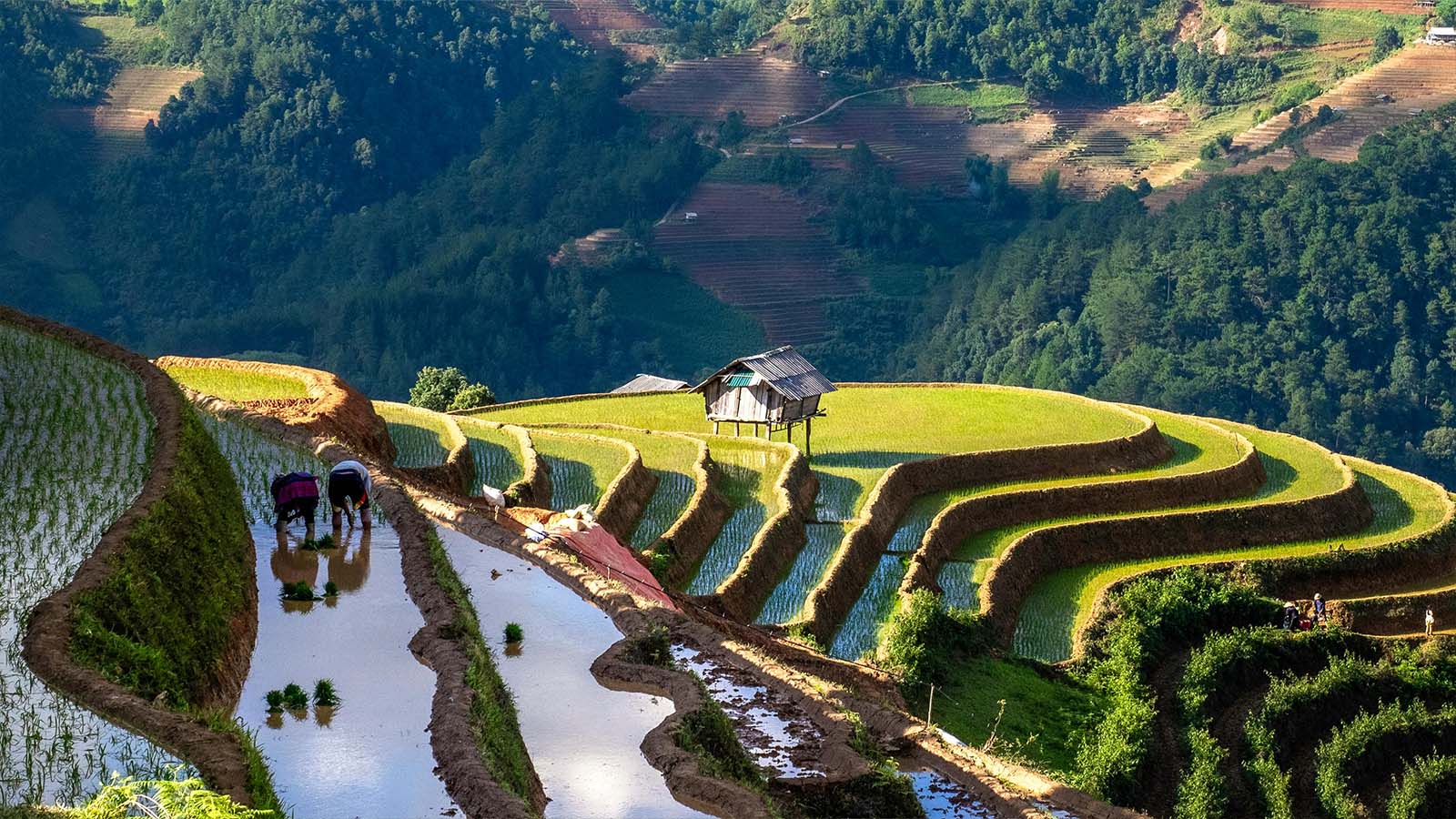
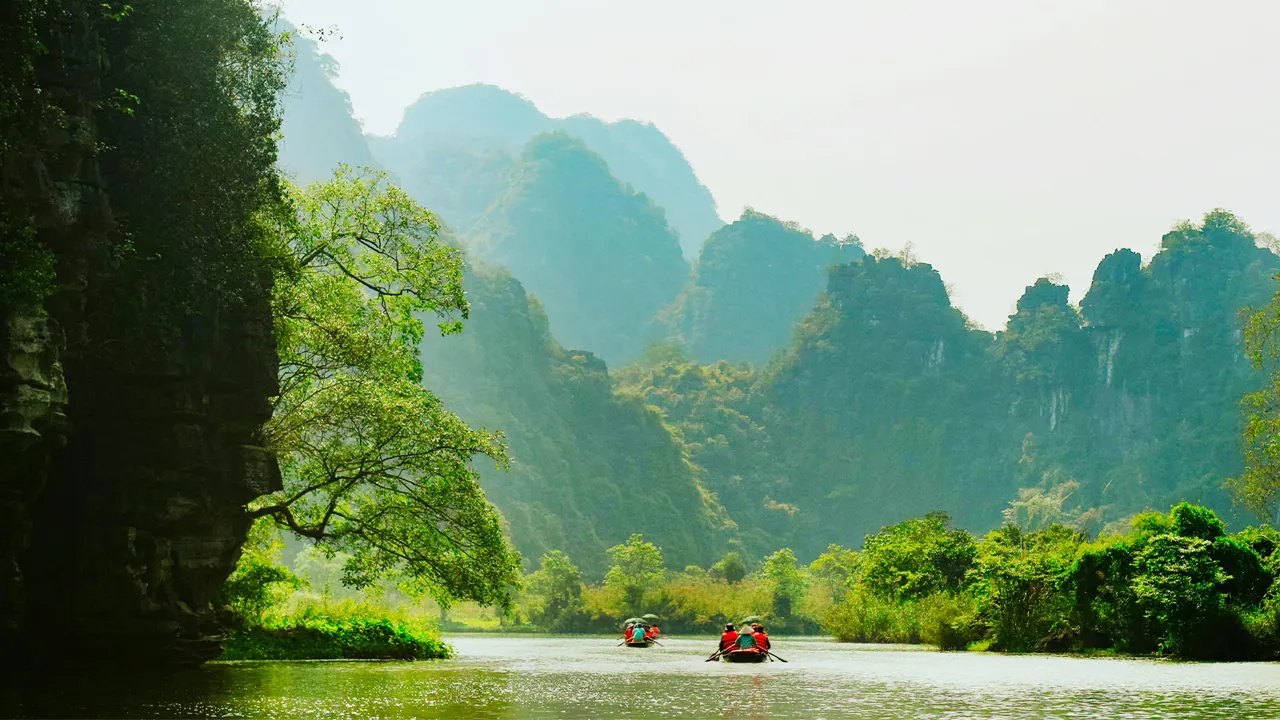






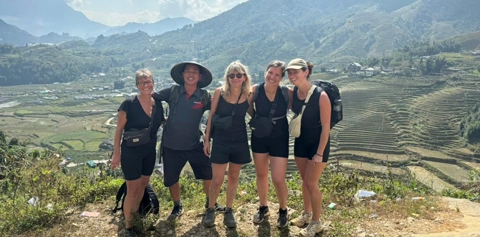
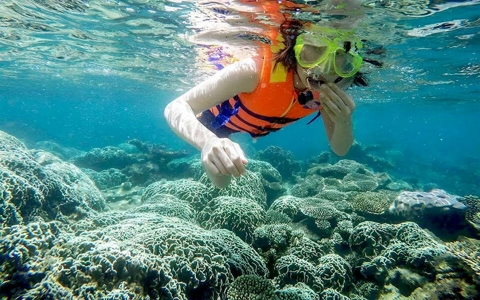
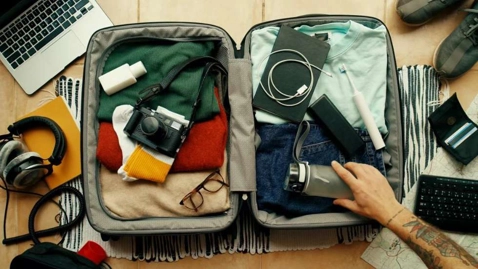
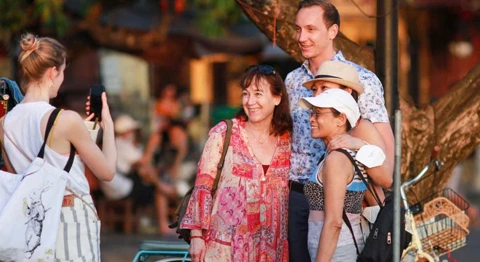
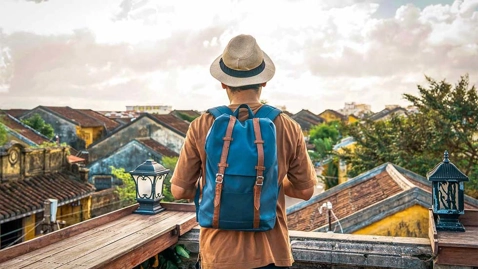
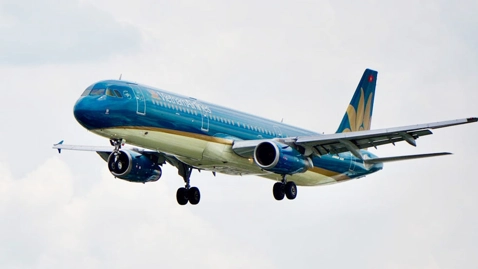
















Comment